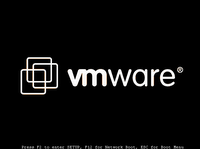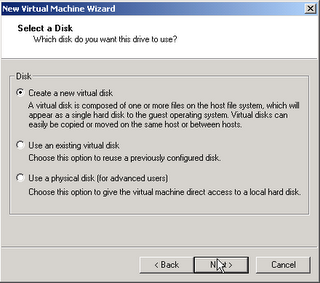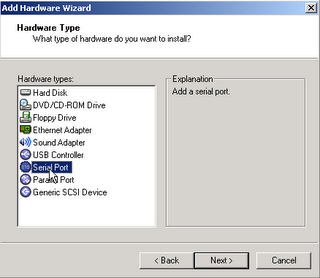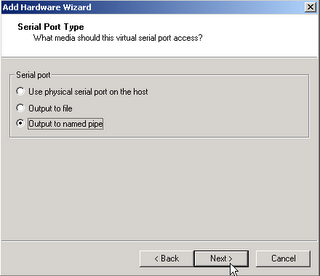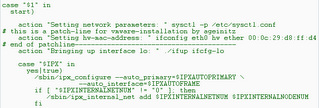Until the recent advent of so called IP communications, corporate communications services were siloed and the market was dominated by historical telecom equipment vendors.
A few years ago, the model was challenged as VoIP was pushed into the corporate IT infrastructure. At the same time, broadband internet connections have become more and more commonplace both for home & corporate users who were given the opportunity to experiment rich & cheap communications technology, while mobile communications reached out the masses.
This has resulted in a drastic change of the corporate communications paradigm : from proprietary technology to open standards, from client/server architecture to peer-to-peer, from multimedia to unified communications.
All leading technology vendors have jumped on the bandwagon, with different strategies to achieve the same goal : to protect their revenues. As a matter of fact, innovation is far below expectations at the end of the day.
But they missed out the fact that, so long as network continuity & interoperability is guaranteed, unification is not achieved at the infrastructure level but rather at the end user level :
- The Network side is the job of integrated fixed & mobile network service providers
- The End user side is the job of device manufacturers & software companies
Indeed, mobile devices & portable applications are bound to supersede any other type of end user equipment for the corporate user who will expect a true unified & seamless communications experience both at and away from the workplace.
This is why the driving forces of corporate unified communications will no longer be telecom equipment vendors but network service providers & end user experience champions who will have succeeded in the residential market segment.
Recent news illustrate this ongoing trend :
- Yahoo! has partnered with Nokia Siemens,
- Microsoft has partnered with Motorola, Philips & Nortel,
- Cingular Wireless has partnered with Apple in the US,
- SFR mobile has taken over Tele2 Internet broadband business in France,
- Skype has a miriad of hardware device manufacturer partners,
- Orange business services has partnered with Microsoft to provide hosted unified communications services
- Google, who has partnered with Cap Gemini, is targeting the corporate market with its Google Apps suite,
and the hosted solutions business model (outsourcing & midsourcing) is more and more appealing to companies of all sizes.
However, as opposed to the home market, the corporate market does require professional & consulting services on top of the technology offer. On that front, Microsoft, along with IBM & HP clearly have a distinct advantage. This is also why technology integrators are taken over by service providers.
The reshaping of the business model is also an opportunity for open source initiatives to go mainstream in the corporate segment so long as they are backed up by established firms like Red Hat & Novell, should they recall that “marketing comes first, management next and engineering last” - but not least!

 Nearly 10 years after Cisco & Skype initiated the VoIP revolution that has transformed Telephony into Unified Communications, Microsoft is gearing up to rip the combined benefits of IP convergence and cloud computing with the launch of
Nearly 10 years after Cisco & Skype initiated the VoIP revolution that has transformed Telephony into Unified Communications, Microsoft is gearing up to rip the combined benefits of IP convergence and cloud computing with the launch of 





 The flu business will probably be ranked amongst the most popular business cases reviewed in Business schools in a few years. Indeed, it has all the characteristics that makes it a businessman dream : it is recurrent (every year), it is viral (self-explanatory really;), it addresses a mass market, it has strong global branding (sras, chicken flu, mexican flue, HxNy, etc...), excellent media coverage, deep impact on public opinions and full support from state governments. This is really much better than the iPhone... but not as good as the subprime crisis -as yet!
The flu business will probably be ranked amongst the most popular business cases reviewed in Business schools in a few years. Indeed, it has all the characteristics that makes it a businessman dream : it is recurrent (every year), it is viral (self-explanatory really;), it addresses a mass market, it has strong global branding (sras, chicken flu, mexican flue, HxNy, etc...), excellent media coverage, deep impact on public opinions and full support from state governments. This is really much better than the iPhone... but not as good as the subprime crisis -as yet!



 "Our boby" also known as "bodies" and "bodyworld" is a fascinating exhibition that show in details how is made and how works the human body. The bodies presented are all real human bodies provided by the Anatomical & Technologies foundation of Hong-Kong.
"Our boby" also known as "bodies" and "bodyworld" is a fascinating exhibition that show in details how is made and how works the human body. The bodies presented are all real human bodies provided by the Anatomical & Technologies foundation of Hong-Kong. The introduction of voice interactions into the social web seems to be a failure in most cases as reported by most observers of the voice 2.0 scene. This
The introduction of voice interactions into the social web seems to be a failure in most cases as reported by most observers of the voice 2.0 scene. This  The costly mainframe technology was ditched out in the 90's in favor of x86 based server platforms but global warming considerations give a significant TCO advantage to large systems according to IBM. The company has performed several surveys regarding the energy efficiency of IT systems and is coming up with results that fully support their green computing approach.
The costly mainframe technology was ditched out in the 90's in favor of x86 based server platforms but global warming considerations give a significant TCO advantage to large systems according to IBM. The company has performed several surveys regarding the energy efficiency of IT systems and is coming up with results that fully support their green computing approach. HMI 1.0 (Human Machine Interface) was keyboard/screen. HMI 2.0 came with the mouse and the graphical user interface. What will be the HMI 3.0 ? Voice recognition technology is so complex that I doubt it will ever reach maturity. The successful come back of touch screen technology in the mobile computing segment seems to have given a new momentum to haptic technology -to such an extent that Microsoft is about to releasing its own
HMI 1.0 (Human Machine Interface) was keyboard/screen. HMI 2.0 came with the mouse and the graphical user interface. What will be the HMI 3.0 ? Voice recognition technology is so complex that I doubt it will ever reach maturity. The successful come back of touch screen technology in the mobile computing segment seems to have given a new momentum to haptic technology -to such an extent that Microsoft is about to releasing its own 


 Video call escalation (peer-to-peer) is now supported in forever4035. It works with any webcam that has a Windows driver. The video is encoded on the fly with the TrueMotion VP7 Personal Edition codec which delivers amazing real time video quality even at low bandwith (300 kbps). VP7 Personal Edition is a free version of
Video call escalation (peer-to-peer) is now supported in forever4035. It works with any webcam that has a Windows driver. The video is encoded on the fly with the TrueMotion VP7 Personal Edition codec which delivers amazing real time video quality even at low bandwith (300 kbps). VP7 Personal Edition is a free version of 

 The video call feature in the forever4035 softphone is powered by
The video call feature in the forever4035 softphone is powered by 
 With the purchase of
With the purchase of  Freeswitch is a brand new initiative led by a former Asterisk developer.
Freeswitch is a brand new initiative led by a former Asterisk developer.

